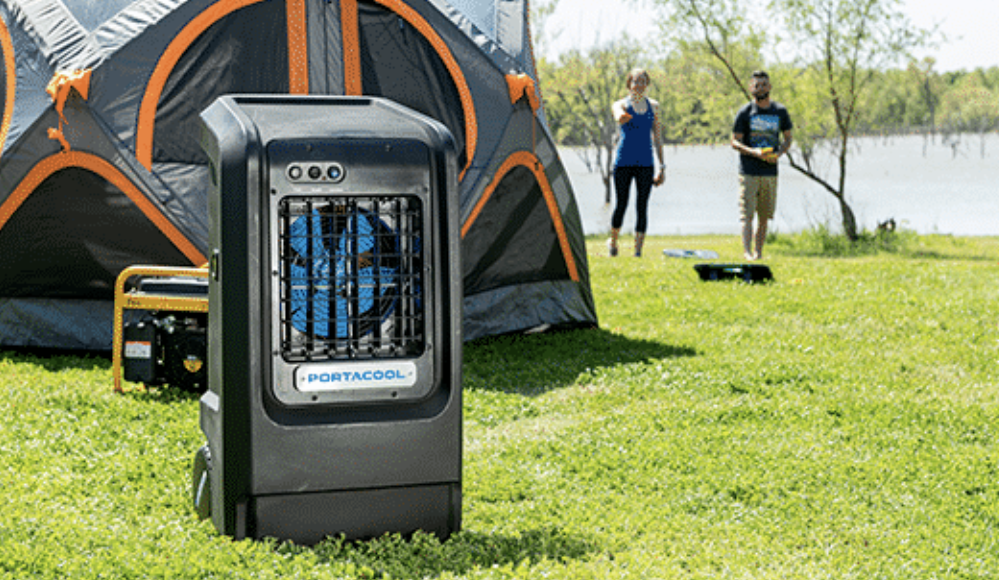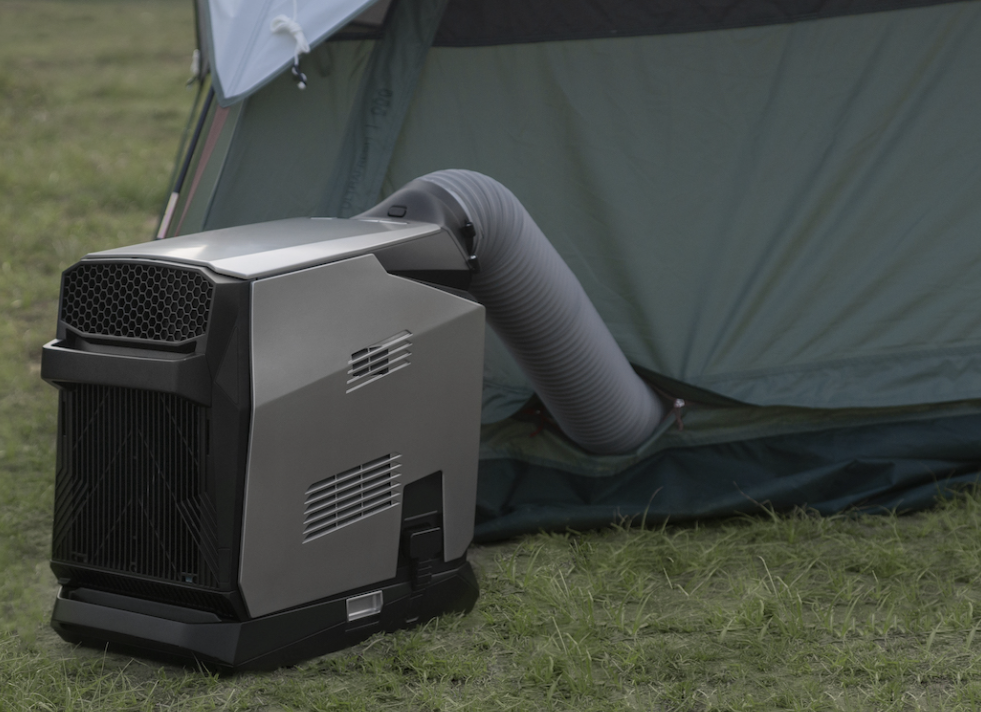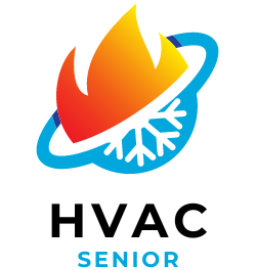Best camping air conditioner.
Camping, with its promises of adventure and closeness to nature, beckons amid the expansive landscapes and starry evenings. However, as the day is warmed by the sun, so is the demand for relief from the heat. Let’s introduce the unsung camping hero: the camping air conditioner.
Imagine having access to a cool paradise no matter the weather, with a camper van tucked away by a peaceful lake and a tent placed behind tall trees.
Numerous air conditioning options have developed in the enchanted world of camping to make outdoor adventures more than simply bearable—but pleasant.
The first is the smallest portable air conditioner, a dependable electric friend that dependably converts tent interiors into cool havens.
Then came the battery-operated fan with a cooling surprise, which quickly removed discomfort using a combination of moisture magic and airflow.
The evaporative cooler enters the scene when the sun sets, using the time-tested idea of water’s cooling embrace, which is ideal for dry environments.
Additionally, solar-powered air conditioners for the environmentally conscious make off-grid vacations simple. The clever tent air conditioner, created to blend in perfectly with your canvas home away from home, completes the chorus.
In order to clarify the road to a cool and comfortable outdoor adventure, we go deeper into these five different types of camping air conditioner, analyzing their mechanics, benefits, and drawbacks.
1.Battery-Powered Fans with Cooling.

My first Camping air conditioner in this article is Battery-Powered Fans with Cooling.Frequently referred to as a “cooling fan,” this portable appliance is made to give airflow and cooling comfort in hot and muggy settings.
When standard air conditioning is unavailable or impractical, such as during outdoor activities like camping, hiking, or sporting events, this sort of fan is frequently employed.
Key Features
Portable cooling fans powered by batteries provide relief from the heat in outdoor settings. They mix airflow with cooling techniques including misting or evaporative cooling.
They are small and light. For improved cooling, certain models come with ice compartments.
These fans offer comfort when traveling and are perfect for events, hiking, and camping.
However, compared to conventional air conditioning, their cooling efficacy can be somewhat diminished. When choosing the best fan for your outdoor activities, take into account elements like battery life, cooling mechanism, and portability.
Pros
- Portability: Compact and lightweight, easily carried during outdoor activities.
- Instant Relief: Provides immediate cooling in hot environments.
- Battery-Powered: Operates without electricity, suitable for off-grid locations.
- Misting/Evaporative Cooling: Offers a refreshing mist or evaporative cooling effect.
- Versatile: Ideal for camping, hiking, sports events, and more.
Cons
- Limited Cooling: Cooling effect may not match traditional air conditioning.
- Dependent on Batteries: Requires frequent battery replacements or recharging.
- Smaller Coverage: Effective cooling limited to a localized area.
- Humidity Impact: Misting could increase humidity in enclosed spaces.
- Noise: Some models can produce noise during operation.
Pricing
Battery-operated fans with cooling range in price depending on the manufacturer, features, and cooling technique.
The price range for entry-level devices with typical airflow and basic cooling capabilities is $15 to $30.
Fans that use evaporative or misting cooling typically cost between $30 and $60. Costs for more sophisticated models with ice compartments or more airflow capacity could range from $60 to $100 or more.
Brands with premium features or premium pricing may cost more than $100. Remember that continuous costs for charging batteries go toward the overall cost. When choosing a fan, it’s recommended to strike a balance between desired features and available cash.
2.Evaporative Coolers.

Frequently referred to as a “swamp cooler,” this cooling device reduces the temperature of the air around it by using the evaporation of water as its primary cooling mechanism.
In dry and arid climates, this kind of cooler is frequently utilized as an effective substitute for conventional air conditioning systems.
Key Features
- Natural Cooling: Utilizes water evaporation to lower air temperature.
- Energy Efficiency: Requires less electricity compared to traditional air conditioners.
- Cost-Effective: Lower operational costs due to reduced energy consumption.
- Moisture Addition: Increases humidity, benefiting dry environments.
- Simple Design: Consists of a fan and water-saturated pads or filters.
- Suitable for Outdoors: Effective for outdoor spaces and well-ventilated indoor areas.
- Limited Cooling in Humid Climates: Cooling effectiveness diminishes in humid conditions.
- Regular Maintenance: Requires periodic cleaning and pad replacement for optimal performance.
Pros
- Energy Efficiency: Consumes less energy than traditional air conditioners, reducing utility bills.
- Eco-Friendly: Relies on natural evaporation and doesn’t use harmful refrigerants.
- Cost-Effective: Lower operational and maintenance costs contribute to savings.
- Humidity Benefit: Increases humidity levels in dry environments, aiding comfort and health.
- Simple Design: Fewer components, making them easier to install and maintain.
- Ventilation: Requires windows or doors open for effective cooling, promoting fresh air circulation.
Cons
- Climate Dependency: Effective mainly in dry climates; loses efficiency in humid areas.
- Limited Cooling: Cooling effect might not be as strong as traditional air conditioners.
- Water Usage: Requires a consistent water supply and regular maintenance of wet pads.
- Air Quality: Can blow allergens or particles from the wet pads into the air.
- Open Windows Required: Needs good ventilation with open windows or doors for optimal performance.
- Seasonal Use: Most efficient during hot seasons, less effective in colder months.
Pricing
Evaporative cooler costs might vary depending on the brand, cooling capacity, and extra features. Beginner models for smaller rooms range in price from $100 to $200.
Priced between $200 to $400, mid-range coolers have greater cooling capacity and more sophisticated controls.
Premium models can cost between $400 and $800 or more and come with extra features like remote control, bigger water tanks, and improved airflow capabilities.
It’s also important to take maintenance expenditures like changing pads or filters into account. Striking a balance between cooling requirements and price range is advised when choosing an evaporative cooler.
3.Portable Air Conditioner.

An independent cooling device called a portable air conditioner is used to deliver targeted cooling in enclosed places.
A portable air conditioner is designed to chill a single room or region, as opposed to standard central air conditioning systems that cool a whole building.
These devices are frequently used in residences, workplaces, and other locations where it may not be practical or required to establish a permanent cooling system.
Key Features
- Portability: As the name suggests, these units are easily movable. They often come with caster wheels, making them convenient to roll from room to room.
- Exhaust Vent: Portable air conditioners require an exhaust vent to release hot air generated during the cooling process. This vent is usually installed through a window or an opening in the wall.
- Cooling Mechanism: Portable air conditioners use a compressor and refrigerant to cool the air. Warm air is drawn into the unit, cooled through the refrigeration cycle, and then blown back into the room.
- Control Options: Most units come with a control panel that allows users to set the desired temperature, fan speed, and operating mode (such as cooling, fan-only, or dehumidification).
- Size and Capacity: Portable air conditioners come in various sizes and cooling capacities, measured in BTUs (British Thermal Units). The size needed depends on the size of the space you intend to cool.
- Window Kit: To maintain efficiency, portable air conditioners include a window kit to seal the exhaust vent in the window opening.
- Dehumidification: Many portable air conditioners also have a dehumidification mode, which helps to reduce excess moisture from the air.
Pros
- Localized Cooling: Provides targeted cooling for specific rooms or areas.
- Portability: Can be easily moved from one room to another.
- No Installation: Requires no permanent installation, making it suitable for renters.
- Versatile: Suitable for spaces without central air conditioning.
- Dehumidification: Helps reduce excess moisture in the air.
- Cost-Effective: Initial cost and energy consumption are often lower than central systems.
Cons
- Limited Cooling Range: Effective only in the room it’s placed in.
- Exhaust Vent Required: Requires an exhaust vent, limiting placement options.
- Noise: Can generate noise during operation.
- Less Efficient: May be less energy-efficient than centralized systems.
- Appearance: The exhaust vent and unit might affect room aesthetics.
- Window Sealing: Properly sealing the window for the vent can be challenging.
- Space Consumption: Takes up floor space and can be bulky.
Pricing
The price of a portable air conditioner varies depending on features, brand, and cooling capacity. Typically, entry-level versions for smaller rooms cost between $200 and $300.
Mid-range systems cost between $300 and $600 and have more powerful cooling and extra features like remote controls and customizable timers.
High-capacity or premium models can cost up to $1,000 or more and feature cutting-edge technology and energy efficiency.
Although portable air conditioners are versatile, their price should be considered along with cooling requirements and energy efficiency objectives. It’s also crucial to take possible maintenance expenditures and long-term operational costs into account.
4.Solar-Powered Air Conditioners.

An innovative cooling device that uses solar energy to fuel its cooling operations is a solar-powered air conditioner.
This is among the best Camping air conditioner to areas experiencing sunny weather.
As a sustainable and environmentally friendly replacement for conventional air conditioning systems that depend on power from the grid, this kind of air conditioner is made to harness solar energy through solar panels.
Key Features
- Solar Panels: Solar-powered air conditioners are equipped with solar panels that capture sunlight and convert it into electricity. These panels are typically installed on the roof or in an area with maximum sun exposure.
- Hybrid Systems: Some solar-powered air conditioners are designed to operate in hybrid mode, meaning they can switch between solar power and electricity from the grid when solar energy is insufficient.
- Battery Storage: In certain setups, excess solar energy can be stored in batteries for use during non-sunny periods or at night, ensuring continuous cooling.
- Cooling Mechanism: Similar to traditional air conditioners, solar-powered units use a compressor and refrigerant to cool the air. The main difference is in the power source.
- Energy Efficiency: Solar-powered air conditioners reduce reliance on fossil fuels and can significantly lower energy bills, especially in regions with abundant sunlight.
- Environmental Benefits: These systems have a smaller carbon footprint compared to conventional air conditioning, contributing to reduced greenhouse gas emissions.
Pros
- Sustainability: Uses clean and renewable solar energy, reducing carbon footprint.
- Energy Savings: Substantial reduction in electricity bills, especially in sunny regions.
- Grid Independence: Offers off-grid capability with battery storage options.
- Environmental Impact: Lowers reliance on fossil fuels, contributing to reduced emissions.
- Long-Term Investment: Initial cost is offset by long-term energy savings and potential incentives.
- Hybrid Functionality: Can switch to grid power when solar energy is insufficient.
Cons
- Higher Initial Cost: Installation expenses for solar panels and associated equipment can be significant.
- Sunlight Dependency: Effectiveness depends on sunny conditions, less effective in cloudy weather.
- Space Requirement: Requires ample roof or open space for solar panel installation.
- Maintenance: Solar panels and associated components require periodic maintenance.
- Battery Storage: Batteries add complexity and cost to the system.
- System Compatibility: Retrofitting existing systems may be challenging and costly.
- Installation Challenges: Proper installation requires technical expertise and professional setup.
Pricing
Due to variables including system capacity, solar panel installation, and regional considerations, the price of solar-powered air conditioners varies.
A basic system might cost between $2,000 and $3,000, minus the cost of the solar panels. Including the cost of the solar panel, more complex installations with greater cooling capacity and advanced features might cost anywhere between $4,000 and $8,000 or more.
Solar-powered systems use renewable energy, thus even if the initial investment is larger than with traditional air conditioners, they result in significant long-term savings.
Additionally, government rebates or incentives may reduce the initial expense, making it a long-term economically sensible and environmentally responsible choice.
Conclusion
With the emergence of Camping air conditioner, the idea of comfort has changed in the world of outdoor exploration and adventure.
These adaptable cooling options meet the various requirements of outdoor enthusiasts, providing relief from sweltering heat while blending in with the surrounding environment.
Each category has its own distinct charm, ranging from the affordable yet powerful battery-operated cooling fans that sooth through misting and evaporative technologies to the dependable portable air conditioners.
Going even further, the cutting-edge evaporative coolers show environmental harmony by utilizing the force of water evaporation to turn arid environments into cool havens.
The future holds solar-powered air conditioners that combine outdoor exploration with sustainable energy solutions to pave the way toward sustainability.
These Camping air conditioner do, however, have advantages and disadvantages, just like any other innovation.
Their effectiveness, constrained cooling range, and resource dependence present benefits and drawbacks, urging campers to carefully consider their options considering their unique requirements and the regions they would be traveling through.
The world of Camping air conditioner encourages outdoor enthusiasts to personalize their comfort in alignment with their adventures, embracing the range of solutions available while developing a sustainable spirit, amid this engaging narrative of technological genius and harmony with nature.
These refreshing partners offer a fresh verse to the age-old tale of exploration and connection to the natural world in the dance between technological advancement and the great outdoors.

